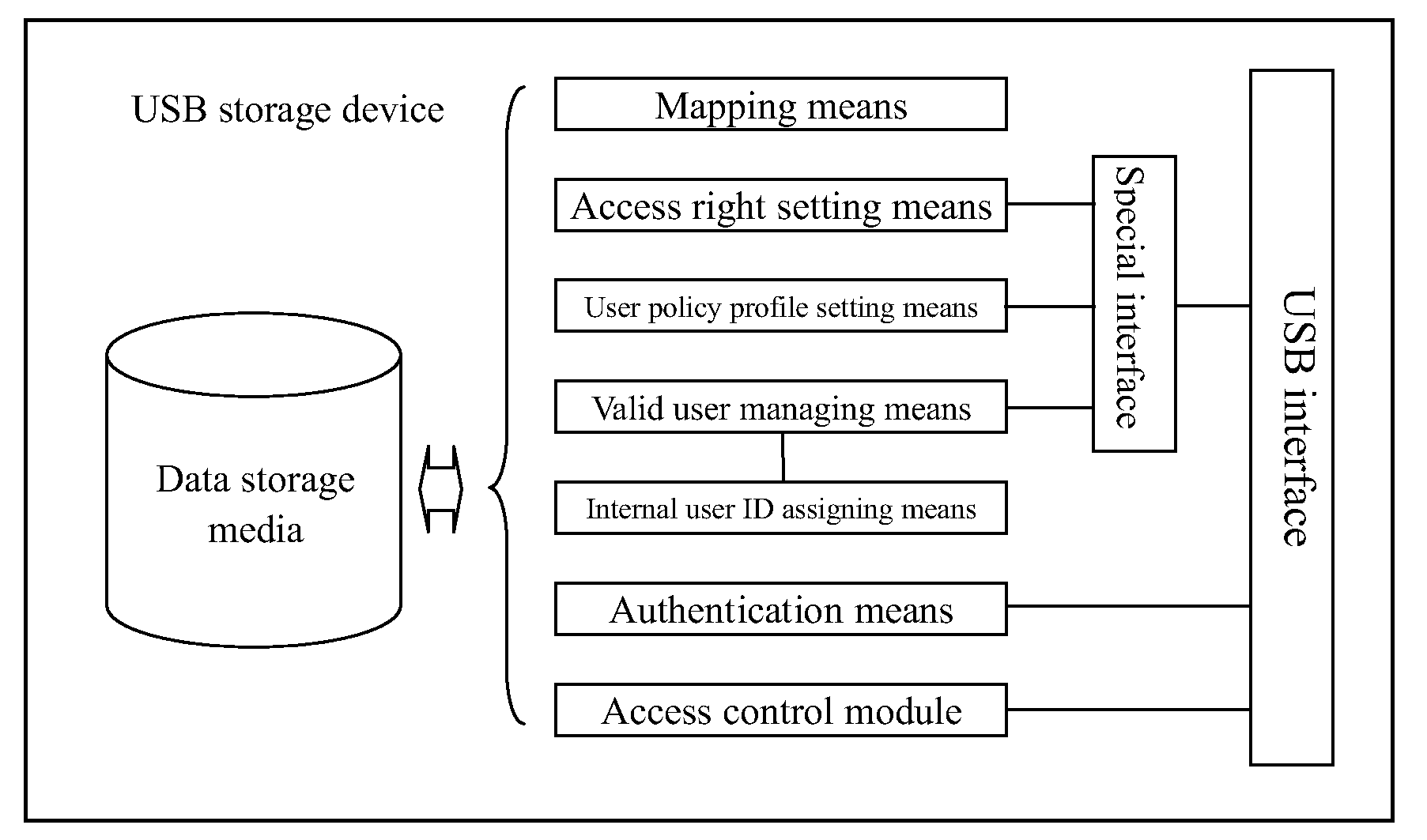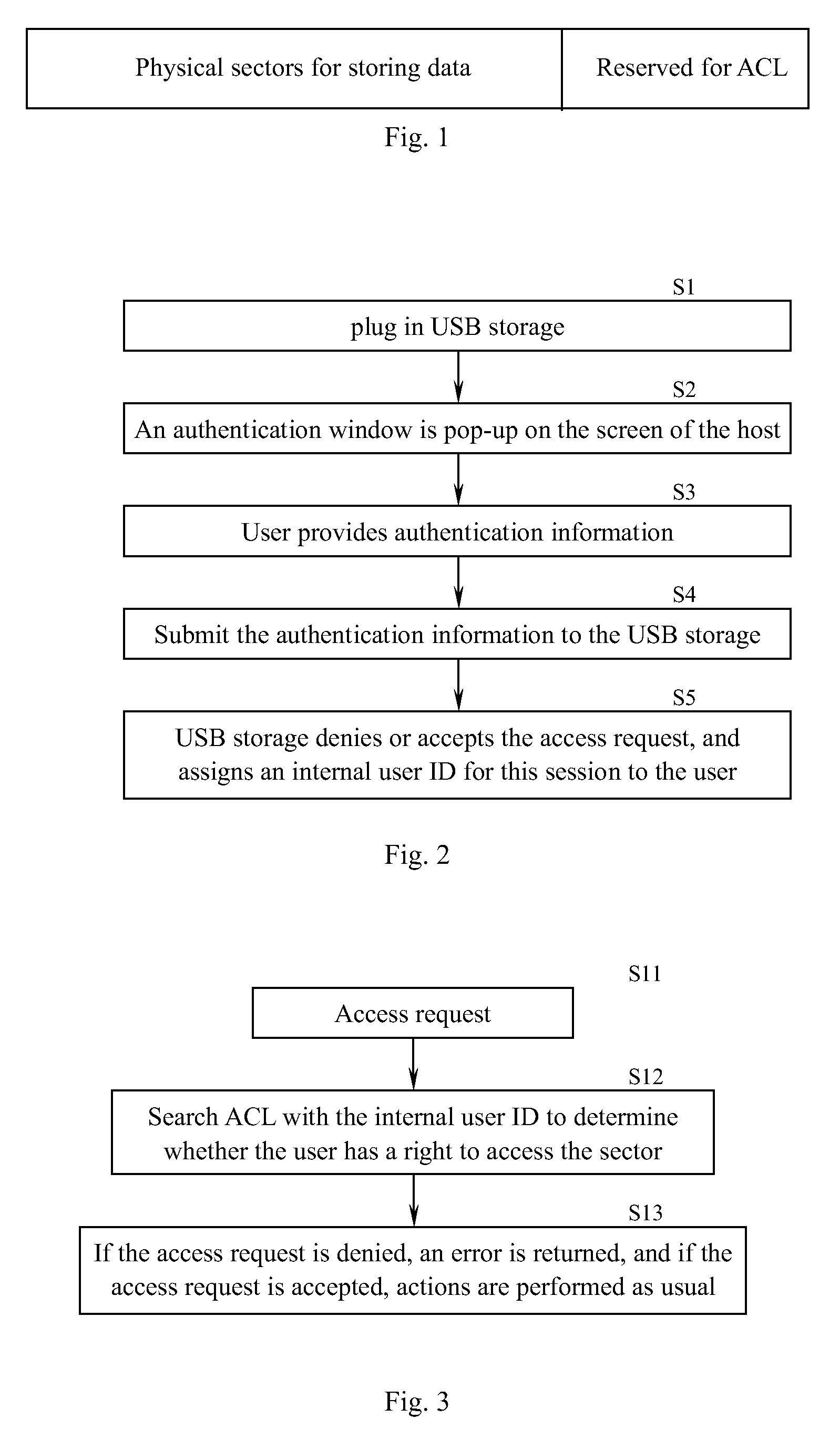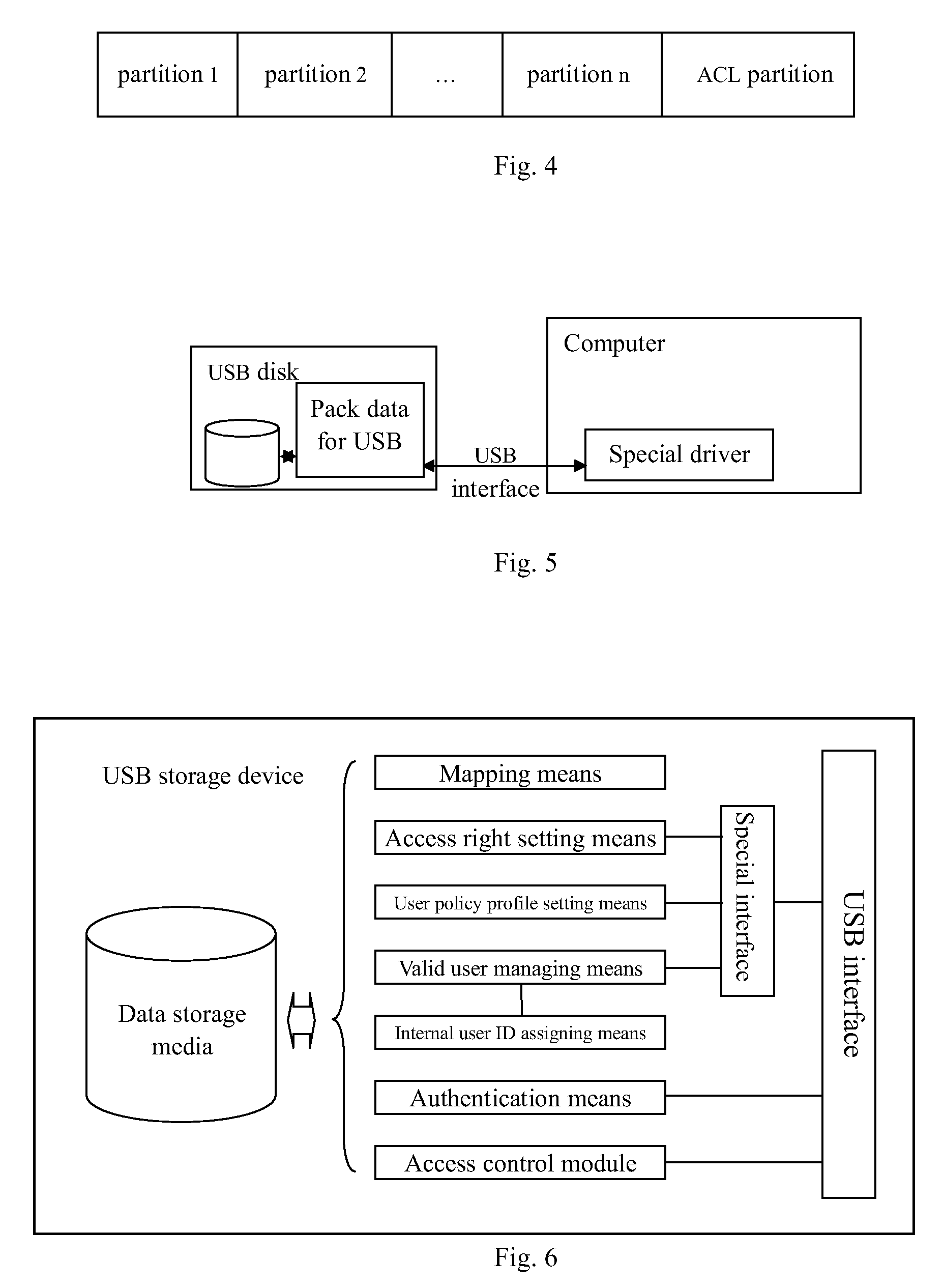Universal serial bus (USB) storage device and access control method thereof
a storage device and serial bus technology, applied in the direction of unauthorized memory use protection, instruments, television systems, etc., can solve the problems of infected executable programs and office documents, file systems that do not support access control, and usb disks that do not provide embedded access control
- Summary
- Abstract
- Description
- Claims
- Application Information
AI Technical Summary
Benefits of technology
Problems solved by technology
Method used
Image
Examples
implementation method example 1
Sector Based Access Control
1.1 Addressing and Access Control List (ACL) Storing
[0026]Devices and operating systems which support the USB mass storage class specification exchange data address information in head, track, cylinder and sector or other structure (As for tapes, QIC-157 command block is used).
[0027]Here, we employ head, track, sector as an example of the logical address. Such an address is defined for UFI (USB Floppy Interface) to calculate LBA (Logical Block Address). Addresses for other specifications will be different, but the basic concept will not change.
[0028]No matter how the storage device is formatted, the file system will be constructed into multiple blocks. Block is a logical concept in file system, but it is always related to addresses on the storage device. As for UFI, the block must be equal to or larger than a sector, because the sector is the smallest unit for calculating LBA.
LBA=(((Track*HeadTrk)+Head)*SecTrk)+(Sector−1)
[0029]HeadTrk is the number of head...
implementation method example 2
Access Control of Partition
[0045]In the previous example, the ACL may become very large. To reduce the size of the ACL, one possible method is to use a partition as the granularity of objects instead of using a sector. Any others aspects are the same as the above example except the calculation of the access control; and the granularity of objects is a partition, instead of a sector.
[0046]When the USB storage device receives an access request, it can calculate the requested logical address, and map it from the raw format to a partition. Then, the ACL is checked to determine whether the request is permitted. If the request is denied, an error will be returned to the operating system.
[0047]Partition information can be created when the first time the disk is formatted. The formatting can be performed by the storage device manufacturer.
[0048]The ACL may be stored in a standalone partition (ACL partition), as shown in FIG. 4, and the right to the partition is set to only permit the privil...
implementation method example 3
Encapsulated Access Control
[0051]Both of the previous two examples are compatible with the current USB mass storage class specification, but they both map files to logical addresses (blocks or sectors). Neither of them knows the boundary of a given file, because they just interpret action requests from the operating system. If we need semantic information of files, the USB mass storage class specification and the USB storage device itself need to be extended.
[0052]In this example, the USB storage device can be a standalone storage device with its own file system format. It can be any file system that supports access control, such as NTFS, ext2, etc. And, the storage device is formatted before sold to customers.
[0053]After the storage device is connected to a computer via a USB interface, the operating system will exchange information with the disk through a self-defined protocol and customized device drivers.
[0054]FIG. 5 shows a schematic diagram of a way in which the USB storage de...
PUM
 Login to View More
Login to View More Abstract
Description
Claims
Application Information
 Login to View More
Login to View More - R&D
- Intellectual Property
- Life Sciences
- Materials
- Tech Scout
- Unparalleled Data Quality
- Higher Quality Content
- 60% Fewer Hallucinations
Browse by: Latest US Patents, China's latest patents, Technical Efficacy Thesaurus, Application Domain, Technology Topic, Popular Technical Reports.
© 2025 PatSnap. All rights reserved.Legal|Privacy policy|Modern Slavery Act Transparency Statement|Sitemap|About US| Contact US: help@patsnap.com



